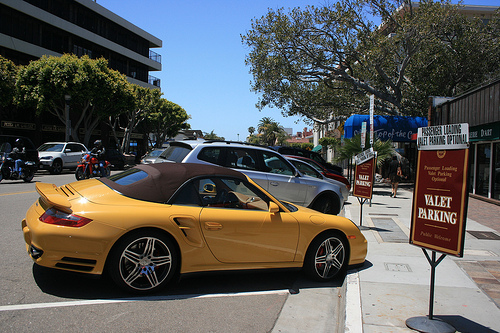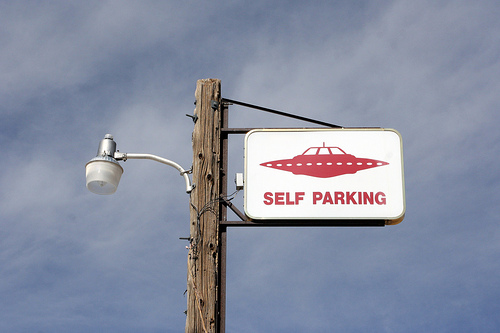With self-parking cars, what future for valet parking?
The days of valet attendants are numbered, according to automotive technology company Valeo. Last week at the annual International Consumer Electronics Show the French business debuted remote parking and self-parking technologies that aim to do away with attendants and allow cars to park themselves.

Self-driving car tech is cutting the valet out of valet parking. From supermac.
Valeo’s automated valet parking program is divided into two implementation phases, as per U.S. law, but at the heart of both is a smartphone app. In the first phase, which could be available as early as 2016, a driver clicks on an icon in the Valeo parking app, which prompts the vehicle to find a space and park. The motorist must, however, keep the car in sight in order for the technology to work.
In the second phase, the driver would no longer need to keep her vehicle in sight and, simply by clicking the app, can expect her car to park itself, as well as return itself to the driver when she’s ready. Valeo estimates that this technology could be available about four years from now.
“In the old way to go shopping with your family, you drive your family to mall, you find a parking space, and you walk a long way to the mall in the rain. On the way back to the car, you’re carrying heavy bags, and the car is not easy to find,” Jean-Francois Tarabbia, R&D and product marketing executive vice president for Valeo, imagined for the press.
“In the new way,” he continued, “you drive to the mall entrance, and you give instructions to the car to park itself. When you’re ready to go, you stand by the mall entrance and give the car instructions to come pick you up.”
The complex system is powered by twelve ultrasonic sensors, four cameras that send images back to the app, and a laser scanner that detects static or moving obstacles so that the system can navigate without bumping into objects or people. It also features sophisticated software that relies on parking-location information from navigation databases.

Welcome to the future. Courtesy Slideshow Bruce.
To transition the system in the same car from the first to the second implementation phase would require a factory and software update, but already 3 million cars feature Valeo’s semi-automatic system, which can perform parallel parking but requires the driver to stay at the wheel.
Guillaume Devauchelle, another vice president for the company, said he believed that self-parking technology could lower the number of parking-lot accidents and is an especially good fit for rental car fleets. It would also be helpful for elderly drivers, who have difficulty with parking maneuvers later in life, he said.
“As you age, turning your head becomes harder, so parallel parking is very difficult,” said Devauchelle.
Devauchelle’s prediction could bode well for America’s elderly population, which is expected to grow from 12.9 percent to 19 percent by 2030, according to the Administration on Aging.
Related Posts
Category: News, Parking Tech




















